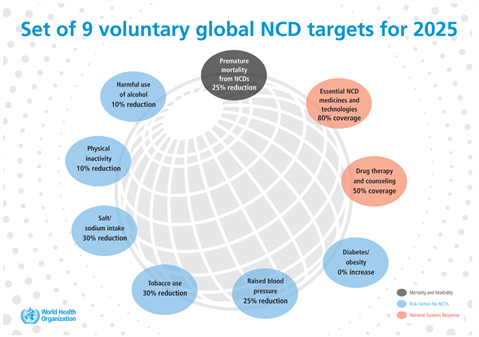Monitoring
Latest report
News
Monitoring frameworks
The Sustainable Development Goals (SDGs) for 2030
Goal 3 Ensure healthy lives and promote well-being for all at all ages.
Indicator 3.5.1. Coverage of treatment interventions (pharmacological, psychosocial and rehabilitation and aftercare services) for substance use disorders.
Indicator 3.5.2. Alcohol per capita consumption (aged 15 years and older) within a calendar year in litres of pure alcohol.
Global survey on progress on SDG health target 3.5 (2019)
World Health Statistics 2020: Monitoring health for the SDGs

The NCD Global Monitoring Framework
The NCD Global Monitoring Framework was developed to enable global tracking of progress in preventing and controlling major noncommunicable diseases - cardiovascular disease, cancer, chronic lung diseases and diabetes - and their key risk factors including tobacco use, the harmful use of alcohol, physical inactivity, and unhealthy diets.
Target:
At least 10% relative reduction in the harmful use of alcohol 2, as appropriate, within the national context
Indicators:
Total (recorded and unrecorded) alcohol per capita (aged 15+ years old) consumption within a calendar year in litres of pure alcohol, as appropriate, within the national context
Age-standardized prevalence of heavy episodic drinking among adolescents and adults, as appropriate, within the national context
- Alcohol-related morbidity and mortality among adolescents and adults, as appropriate, within the national context

Resources for monitoring
International Guide for Monitoring Alcohol Consumption...
Information systems
Data collection tools
